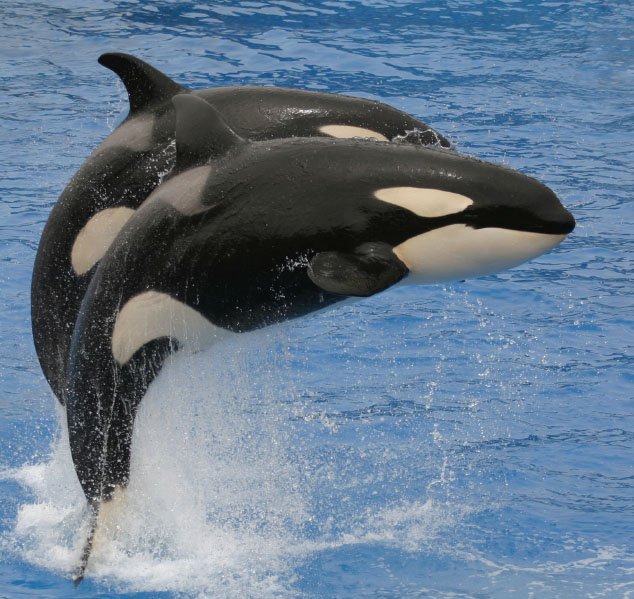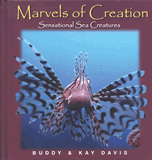Killer Whale
Whales are divided into two groups: toothed (like the killer whale and dolphins, etc.) and baleen (blue whale, sperm whale, humpback, etc.). Baleen is not teeth, but long hair-like strands that sieve small plankton and fish.
The killer whale is also known as the orca. These highly intelligent whales can be trained when captured, and have delighted thousands of people with their antics. They have a long dorsal fin which often bends over on captive whales.
In the wild, orcas live in family groups or pods. A pod is usually made up of 10 to 15 whales. They are found in all seas, but more often found in Arctic and Antarctic waters. They can dive to over 3,000 feet (914 m) and not surface for 20 minutes between breaths. They feed on seals, turtles, penguins, octopus, squid, fish, and even larger whales. Killer whales have 40 to 50 teeth which are 3 or 4 inches long. They can communicate with other killer whales by whistles and screams.
Sperm whales have been recorded to dive 10,000 feet. They can dive 560 feet per minute and surface at the rate of 450 feet per minute. How the heart, blood vessels, and internal organs can withstand this pressure is amazing. An adult sperm whale can eat 100 tons of food a day. A nursing female can provide her calf with 50 to 100 gallons of milk per day.
Humpback whales are large and look poorly designed because of their flippers, which are not smooth—they are knobby with tubercles (little bumps). You would think this would hinder their agility in the water, but it is quite the opposite. Studies on these knobby flippers are helping aeronautical engineers to design more effective wings on airplanes.
Some evolutionists believe the ancestor of the whale (like all life) started in the sea. After many millions of years, they evolved and crawled onto land, eventually evolving into a creature resembling a cow or wolf. After several millions of years, they slowly migrated back into the sea. Strange as it may seem, some scientists point to a few fossils as evidence. One such fossil is Pakicetus, the believed intermediate form between mammals and whales. It was called a missing link. The fossil evidence of this creature consisted of only fragments of the skull and jaw, yet a picture was published showing this whale-like creature swimming and catching fish. Then more fossils were found which were more complete and a new picture had to be painted. A prominent evolutionary whale expert said Pakicetus was a land mammal and a swift runner.
Evolution is constantly changing. What is fact today is wrong tomorrow. The Bible never changes. God created the sea creatures on day 5 of the creation week.
Killer Whale
Cetacea • Delphinidae • Orcinus orca
Length: 31 feet (9.5 m)
Weight: 16,000 pounds (35,040 kg)
Life Span: 25 to 30 years
Special Design Feature: Besides being highly
intelligent mammals, whales can dive to great
depths, sometimes holding their breath for close
to an hour.
Did You Know? The blue whale is the largest
known animal to exist, dwarfing the largest of the
sauropod dinosaurs. They can grow to over 100
feet long (33 m) and weigh 130 tons, yet feed on
the smallest creatures on earth....

Marvels of Creation: Sensational Sea Creatures
Brings the world of the sea alive in a unique and colorful way with photographs, a page of facts and commentaries.
Browse Kids BookRecommended Resources
- © 2024 Answers in Genesis
- Privacy Policy
- Contact
- About


